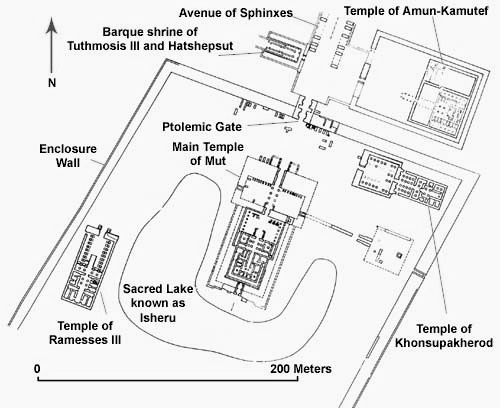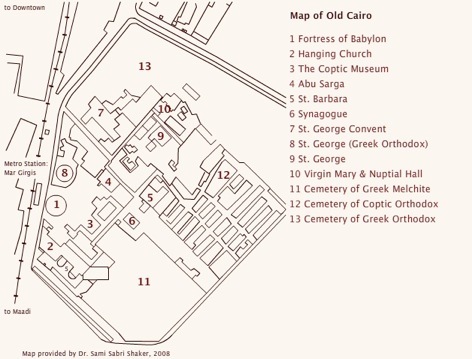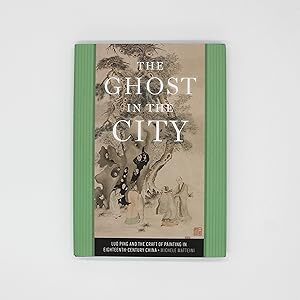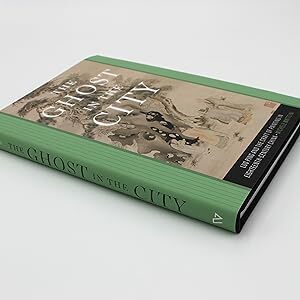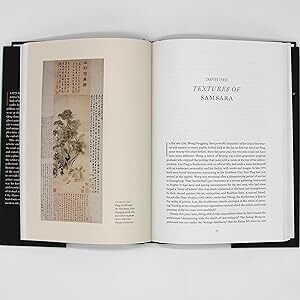Chiara C. Rizzarda's Blog, page 47
October 25, 2023
#Spooktober 25 – The Girl from the Other Side
Originally titled “Foreign Girl”, and with an Irish song as a subtitle, this 11-volume manga is one of the finest things produced in the last ten years and it tells the story of Shiva, a young girl, who is abandoned in a cursed forest and lives with one of the “others”, creature who can curse you with their touch. The girl and the monster, whom she calls “Teacher”, develop a complex relationship which eventually boils down to the ultimate question: what is a monster?
Both the drawings and the delicate narration will have you into tears by the end of it.
October 24, 2023
Egyptian Schedule – Day 6
Today we’ll be in the Dendera Temple complex and if everything goes right we’ll be seeing:
The Temple of Edfu, dedicated to the falcon god Horus;The Temple of Kom Ombo, dedicated to the crocodile god Sobek.1. Temple of EdfuThe Temple was built between 237 and 57 BC, during the Ptolemaic Kingdom, when the city of Edfu was known as Apollonopolis Magna had the god Horus was syncretised with Apollon. Horus was the chief God, by this time in history, and the myth of Isis and Osiris had simply grown to be his backstory. It’s one hell of a backstory, but that’s a topic for another time.
Even considering it’s much more recent than all the stuff I showed you so far, the temple is astonishingly well preserved, featuring inscriptions and depictions of the god’s eternal quarrel with Seth, grown to symbolise the arrival of a new Era in opposition to previous, barbaric times. Another more famous set of scenes involves however the myth of creation: the world is shown covered in water, until Horus lands among the reeds and attempts to separate the land for humans to live on. Enters the snakelike entity called Apophis, who tries to impede creation and is able to instill fear in the heart of the falcon god, at least until Ptah comes to his aid in the form of a weapon. Horus places a falcon in the sky, and its wings create the dome. The sun starts sailing its course. And the temple in Edfu is shown to be designed by Thoth and Seshat, the Ibis god of wisdom and the pelt-wearing goddess of writing.
The temple is massive in size, measuring 76 x 79 meters and rising to a height of 36 meters which is, again, the nave height of Notre Dame. Begun on 23 August 237 BC under the reign of Ptolemy III Euergetes, it originally consisted of a pillared hall, two transverse halls, and a barque sanctuary surrounded by chapels. It was finished in 57 BC under Ptolemy XII Auletes, also called “the new Dionysus”, a guy whose nickname referred to the flute played during festivals and who must have been fun at parties.
When Theodosius I started persecuting everyone who was not Christian, the temple fell into disuse and many reliefs were either stolen or purposefully damaged by zealots. Luckily enough, the desert sands submerged the ruins and it rested upon a French Egyptologist, one Auguste Mariette, to discover it again in 1860.
2. The Temple of Kom Ombo
Unusual in layout, it’s the second temple in the Dendera Temple complex and it’s commonly called a “double temple”, with a mirrored layout serving the worship of the crocodile god Sobek, god of fertility and husband of Hathor, and of the falcon god Haroeris, a form of Horus considered the son of Geb and Nut. The latter was hosted on the northern side of the temple, alongside minor worship of a form of Hathor called “the good sister”.
The duality of the layout carries on with a specific characteristic of the worship: if the southern side pertains to universal worship, with Sobek bringing these from the widespread religious beliefs of Egypt, the northern side attempts a syncretic representation of gods from the local area.
#Spooktober 24 – The Curse of the Were-Rabbit
It’s an obligation for me to watch this 2005 movie at least one time a year, preferably during the spooky season, as it’s one of the finest features from Nick Park and his Aardman Animations.
Co-produced with Dreamworks, it reprises the inventor Wallace and his dog Gromit as the main characters and, as usual, it features them in a bizarre business enterprise: they’re pest controllers in a small countryside town that lives and breathes around an annual Giant Vegetable competition.
Business takes a turn when they receive a call from the wealthy and eccentric Lady Campanula Tottington from Tottington Hall, who has a veritable infestation of rabbits and wishes for someone to deal with them “humanely”. As it turns out, Wallace and Gromit’s method is a little too “humane”: after capturing the rabbits, they keep them in their house, feeding them at their expense. But Wallace has a stroke of genius: what if he can build a machine to channel the lunar power and brainwash the rabbits into not eating vegetables? It’s a plan that might work. And it might work a little too well for everyone’s good.
October 23, 2023
Egyptian Schedule – Day 5
The idea of going down to Luxor is that we take a boat (specifically something like this boat) and we cruise a bit down the Nile.
If everything goes right, today our schedule features:
So let’s see what that’s going to be about.
1. KarnakThe construction of the Karnak Temple Complex was begun during the reign of one Senusret I (1971–1926 BC) during the so-called Middle Kingdom, which means it is approximately contemporary to some of the stuff we saw in Memphis and around 700 years younger than the Pyramid of Djoser. This means that the stepped pyramid and these temples are separated by around the same time span we have between us and Notre-Dame. Most of the buildings come from the New Kingdom (1550 – 1069 BC), but the site remained relevant all the way into the Ptolemaic Kingdom (305–30 BC), which means Cleopatra. To give you an idea of the significance, the area was known as “The Most Selected of Places” (Ipet-isut) and a centre of worship for the so-called Theban Triad: the sun-god Amun, his consort Mut and their son Khonsu, god of the Moon.
 Yes, I’m talking about this guy.
Yes, I’m talking about this guy.It consists of four main parts:
the Precinct of Amun-Ra;the Precinct of Mut;the Precinct of Montu, dedicated to the Falcon-God of War and very poorly preserved;the Temple of Amenhotep IV, a.k.a. Akhenaten, now dismantled because the guy made enemies with the wrong priests.The Precinct of Amun-Ra is the only part that’s accessible to the public, or so I’m told, and it’s dedicated to the Sun-god. As you can see above or from the map below, it consists of a large precinct with the temple and surrounding elements including a Temple of Ramses III, who was assassinated by one of his minor wives Tiye during a thing called the Harem conspiracy.
One of the most prominent features is the corridor of Sphinxes, originally leading to the temple from the quay. The access is believed to have been mainly by boat and the complex must have been a thing to behold.
Begun by Seti I and completed by Ramesses II, the Great Hypostyle Hall was originally designed by Hatshepsut, our favourite Pharaoh, and it covers an area of 5,000 sqm, again around the size of Notre-Dame. The roof was supported by 134 columns arranged in 16 rows: the central row is higher, with columns measuring 10 meters in diameter and 24 meters in height. Ten. Fucking. Meters. Of. Diameter.
They’re covered in inscriptions and scenes of battles, most of them being Ramesses II’s endeavours against the Hittites and the consequent Peace Treaty of Kadesh.
The Precinct of Mut was on the south side of the Amun complex, leaving the Sacred Lake on your left, and it’s approximately 90,000 sqm. The temple overlooks another sacred lake, interestingly enough sporting a more gentle shape than the rectangular one reconstructed near her consort’s temple. Within the lake, archaeologists have found human remains arranged as if they were bound and purposefully placed under the basis of the temple’s columns. I don’t think I want to know.
You reach it through a gate of the Ptolemaic period, and it was visited by many people including Napoleon, but it’s currently being excavated (which is why it’s not visitable). Amongst the many discoveries, incredible black statues of the lion-headed goddess Sekhmet were probably commissioned by Amenhotep III and arranged like trees in a forest.
2. Luxor
The Luxor Temple was constructed around 1400 BC and, it consists of two courts connected by a colonnade. Two obelisks marked the entrance, though only one survives. Well, technically, the second one survives too, but it’s in Paris in Place de la Concorde. Their height and position were studied to give an optical illusion of grandeur, leveraging a perspective trick and enhancing their relative distances.
During the annual Opet Festival, a grand statue of Amun was paraded down the Nile from the nearby Karnak Temple and brought into this temple through this entrance, also overlooking the river. The statue stayed in the temple for a while, symbolically lying with a statue of his consort Mut. A ritual marriage took place in the so-called Birth Room, but it’s not the kind of marriage you expect: the Pharaoh conjoined with Amun-Ra himself to rejuvenate both his fertility and his role as a divine intermediary, was re-crowned and emerged reborn from the chamber.
Another Avenue of Sphinxes leads up to the temple, and it’s also called The King’s Festivities Road or Rams’ Road in relation to the festival’s rituals. It was originally 2,000 meters long and contains over 600 statues divided into three kinds of shapes: statues with a lion’s body and a ram’s head, possibly erected during the reign of Tutankhamun; full rams built by Amenhotep III in a distant location and later transferred to Karnak, proper Sphinxes with the body of a lion and the head of a human.
Shrine stations are scattered through the avenue, leading us to think the procession had reflection and resting points as it happens in some modern celebrations pertaining to other religions. Each station had a purpose and was dedicated to a figure: we had stations for cooling the oars of the sun god, stations to empower the statue with divine qualities and stations to reflect on certain moments of the god’s life. Shrines were built through many eras, as testified by the existence of much younger constructions dedicated to Serapis and Isis.
The Valley of the Kings is possibly the most famous necropolis ever, it was built around the XVI Century BC, and it was used for a period of around 500 years hosting not only pharaohs but also dignitaries and functionaries of the State. The current count of tombs is placed at 65, but recent discoveries have demonstrated that we’re far from done excavating.
Tombs usually consisted of a long sloped corridor dug inside the rocky sides of the valley, descending through multiple halls that were probably a reference to the sun god’s own descent into the underworld. Sometimes the corridor has a sharp 90-degree turn: in these cases, the layout is known as “bent axis”. Other times, the corridor simply ventures straight into the belly of the earth. Eventually, it reaches the burial chamber. Tombs often present a well, a sort of shaft designed to prevent flooding from rainwater.
The star of the valley is undoubtedly Tutankhamun, discovered by Howard Carter and his gang in November 1922. Hatshepsut is also buried here, in a uniquely shaped tomb.
4. The Colossi of MemnonAccording to the Greek, Memnon was a mythological king of Aethiopia, a great warrior considered equal to Achilles and who sided with Troy during the war. He never existed. So why does he have two colossal statues erected in his honour nearby Thebes? Well, he doesn’t. I have no idea why, but someone at a certain point thought these were his statues while in fact they represent Pharaoh Amenhotep III. That’s life. Even for a statue.
The Northern colossus is significantly more damaged than its twin, allegedly after suffering an earthquake around 27 BC, and it has peculiar cracks that, when channelling the wind, reportedly make the statue sing. Strabo was the first to hear its wails, followed by Pausanias, Tacitus, Philostratus and Juvenal. The statue was quickly thought to have oracular powers, and people came from outside Egypt in the hope of hearing its words.
#Spooktober 23 – Signs of Life
Is there anything more Halloweenish than Neil Gaiman? Oh yes, there is: an album by Neil Gaiman and the FourPlay String Quartet.
Described as a “Classical Crossover”, it features Neil’s voice alongside a violin, two violas and a cello. Words are primarily by Neil, when they’re not from Shakespeare, and the music follows without effort. The quartet supports with voices, and here it is: a wonderful album full of haunting tunes.
Having to pick one, I picked Bloody Sunrise, track nr3, the story of a miserable vampire.
Track ListClockMöbius StripBloody SunriseThe WreckersSong Of The SongCredoNeverwherePoem First Read On January 26th 2011 At The Sydney Opera HouseThe Problem With SaintsIn TransitSigns Of A LifeOceanicEvery night when I crawl out of my grave
Looking for someone to meet
Some way that we’ll misbehave
Every night when I go out on the prowl
And then I fly through the night
With the bats and the owls
Every time I meet somebody
I think you might be the one
I’ve been on my own for too long
When I pull them closer to me
Bloody sunrise comes again
Leaves me hungry and alone
Every time
Bloody sunrise comes again
And I’m nowhere to be found
Every time
And you’re a memory and gone
Something else that I can blame on
Bloody sunrise
Every night I put on my smartest threads
And I go into the town
And I don’t even look dead
Every night I smile and I say, “Hi”
And no one ever smiles back
And if I could, I’d just die
But when I’m lucky, I do get lucky
And I think you might be the one
Even though the time is flying
When we get to the time of dying
Bloody sunrise comes again
Leaves me hungry and alone
Every time
Bloody sunrise comes again
And I’m nowhere to be found
Every time
And you’re a memory and gone
Something else that I can blame on
Bloody sunrise
And you’re a memory and gone
Something else that I can blame on
Bloody sunrise
October 22, 2023
Egyptian Schedule – Day 4
Provided we survive day 3, day 4’s schedule was left empty by the tour organizers. To revive people, I think. We leave for Luxor at 18.30, though, so I think there will be time for one final expedition to the Coptic Cairo.
1. Coptic CairoIn case you’re not familiar, the district is a predominantly Christian area and features some incredible monuments (mostly churches, to be fair) and includes the so-called Babylon Fortress, an Ancient Roman stronghold built with the arrival of emperor Augustus. The Hanging Church lies next to it, named for its location above one of the gatehouses and officially dedicated to the Virgin Mary, and it’s believed to be the oldest church in all of Egypt.
Another interesting feature is the Church dedicated to St. Philopater Mercurius, the double-sworded, a building which hosted the seat for the Coptic Orthodox Pope of Alexandria between 1300 and 1500. Its saint, Mercurius, was a Roman soldier of Scythian descent, born in Cappadocia, who served as a soldier under Emperor Decius. Having befriended the Emperor, it is said he tried to intercede against the persecution of Christians, but to no avail. Having refused to pray with the Emperor, he was beheaded aged 25.
Of course the district couldn’t miss a church dedicated to St. Mena, possibly the Coptic saint who was set on fire and burned unharmed for three days.
2. LuxorLuxor is around 650 km down the Nile from Cairo, and it includes the site of the Ancient Thebes. I’ll sleep directly on board the ship, as the next day we depart for the river cruise. Hopefully, no one will get murdered.
#Spooktober 22 – The Ghost in the City
Today’s book is published by the University of Washington Press and focuses on the life and work of Luo Ping, an XVII Century Chinese artist.
In 1771 the artist Luo Ping (1733–99) left his native Yangzhou to relocate to the burgeoning hub of Beijing’s Southern City. Over two decades, he became the favored artist of a cosmopolitan community of scholars and officials who were at the forefront of the cultural life of the Qing-dynasty (1644–1911). From his spectacular ghost paintings to his later work exploring the city’s complex history, compressed spatial layout, and unique social rituals, Luo Ping captured the pleasures and concerns of a changing world at the end of the Qing’s “Prosperous Age.”
This study takes the reader into the vibrant artistic and literary cultures of Beijing outside the court and to the networks of scholars, artists, and entertainers that turned the Southern City into a place like no other in the Qing empire. At the center of this narrative lie Luo Ping’s layered reflections on the medium of painting and its histories and formal conventions. Close reading of the work of Luo Ping and his contemporaries reveals how this generation of experimental artists sought to reform ink painting, paving the way for further developments in the nineteenth and twentieth centuries. Drawing on a vast range of textual and visual sources, The Ghost in the City shares groundbreaking research that will transform our understanding of the evolution of modern ink painting.
It’s another marvellous book by an Italian scholar and an instant favourite of mine. Michele Matteini is assistant professor of art history at New York University and associate faculty at the Institute of Fine Arts.
October 21, 2023
Egyptian Schedule – Day 3
Should everything proceed according to schedule, a jolly light day expects me today as we’ll be taken to see:
the Giza Pyramids and all that jazz;Memphis;Saqqara.Yeah. I know.
1. The PyramidsWhat to say? You know them. They’re triangular. They’re huge. They’re in the middle of nothing (no they’re not). They were built by aliens.
I’m not going to give you “interesting facts” about the pyramids, I’m not a fucking tour guide. I’ll just drop a map here for my future self.
Not Memphis Tennessee, at least I hope.
Still, it’s 25 km to the south of Giza and I have no idea how the fuck do we expect to see them both in one day.
The Mit Rahina Museum is an open-air built around a colossal overturned statue of everyone’s favourite Pharaoh Ramses II (not mine) and it’s close to a chapel where the guy was worshipped alongside Sekhmet, the lion goddess of war and healing, and her consort Ptah, the creator god of language and one of the nicest guys you’ll ever meet in a pantheon.
As the patron of craftsmen, Memphis was believed to be under his protection and his massive temple used to be by the Western Gate. Much of what we know about it comes from the writings of Herodotus, a guy who’s prone to listening to people he met at the pub, and as such you can’t give it too much credit.
Hathor, the Sky goddess who was betrayed by Ra, had a small temple or, most likely a shrine on the southern side of the city.
Other deities with minor shrines and chapels were Sekhmet, whose shrine is certified by contemporary sources though was never uncovered, Apis the bull, though considered a manifestation of Ptah, Amun consort of Mut, and the sun-god Aten which is pretty much the reason we found Tutankhamun. Among these, the House of Apis seems to be the most impressive temple, where bulls were possibly used as oracles and were thought to have healing powers. The most accurate description comes from Greek historian Strabo, who visited the site with the conquering Roman troops after Cleopatra was defeated at the Battle of Actium.
The nearby Necropolis at Saqqara covers around 7×1.5 km and features a shitload of monuments, but the most famous is probably the stepped Pyramid of Djoser. I used it a couple of times on this blog when I wanted to shit on people.
From the Early Dynastic Period (3100 BC – 2900 BC) we have:
the tomb of king Hotepsekhemwy, founder of the Second Dynasty;the tomb of king Nynetjer, third pharaoh of the Second Dynasty, who was thought to have reigned for 96 years;the funerary complex of king Sekhemkhet, consisting of a buried pyramid;the funerary complex of king Khasekhemwy, also known as Gisr el-Mudir or Great Enclosure, consisting of a rectangular limestone wall measuring about 650 by 350 metres which purpose is still unknown;the funerary complex of king Djoser, with its famous stepped pyramid.Djoser was a Pharaoh of the 3rd Dynasty, Old Kingdom, and he was one of the first to think it would have been cool for a royal tomb to stick out from the ground, you know, and rise really really high. His vizier was a guy named Imhotep (no, not the villain the mummy), high priest and chancellor but, most importantly, architect. He had the idea of going with a simple shape, a pyramid, and employed building techniques already in use for much more useful engineering projects. For his feat, he was later deified and equated with Thoth, the god of architecture, mathematics, and medicine.
Saqqara also features ruins from “later” periods. Monuments from the Old Kingdom (2686 BC – 2181 BC) include:
The tomb of king Shepseskaf, the last ruler of the fourth dynasty, also known as the mastabat al-Fir’aun: it’s currently consisting of just two steps;the pyramid of Userkaf, a mound of earth discovered in 1831 by the Italian Egyptologist Orazio Marucchi;the pyramid of Djedkare Isesi, referred to as Haram el-Shawaf (the “sentinel pyramid”) which stands out from afar;the pyramid of king Menkauhor, also known as the Headless Pyramid;the mastaba of Ti, ;the mastaba of Khnumhotep and Niankhkhnum, the first recorded same-sex couple in ancient history (do you remember them? I talked about them here and on my Patreon);the pyramid of Unas, another mound of earth;the mastaba of Ptahhotep, a Fifth Dynasty Vizier who wrote a moral book meant to instruct young men in their behaviour and was probably very fun at parties;the pyramid of Teti, first king of the Sixth Dynasty, and its two satellite pyramids for his queens;the mastaba of Mereruka, a powerful dignitary of the Sixth Dynasty vizier to king Teti;the mastaba of Kagemni, likely daughter of Teti;the pyramid of Pepi I;the pyramid of Merenre;the pyramid complex of king Pepi II Neferkare, a child-king of the Sixth Dynasty.The Tomb of Perneb from this period is now in New York at the Metropolitan Museum of Art.
#Spooktober 21 – Thorvald Niss
Thorvald Niss was a Danish XIX Century painter, and he’s mostly known for his landscapes but, as is the case for many of the artists we’re featuring this Spooktober, there’s more to him than meets the eye. Today on my Patreon we take a look at one painting that stands amongst the others.
October 20, 2023
Egyptian Schedule – Day 2
Provided I was able to enter the Country, on day 2 I should wake up in Cairo. Our schedule today features three main points:
the Egyptian Museum;the Citadel;the Bazaar.Let’s see what it means.
1. The Egyptian MuseumI’m assuming they mean the pink one, the one near the 6th October Bridge, designed by Marcel Dourgnon in 1902.
If this is the case, there’s a couple of people I need to meet.
The first one is Hatshepsut, Royal Wife of Pharaoh Thutmose II until he died and she decided she was going to be the fifth Pharaoh of the Eighteenth Dynasty herself because if you want something done you might as well do it yourself. To clear everyone’s doubt and since there was no such thing as a Queen with equal power to a King, she always wanted to be depicted with attributes of a male pharaoh, including the false beard and ram’s horns, dressed in male clothes and with masculine traits.
The lady was one of the most prolific builders in Ancient Egypt, employing the services of an architect named Ineni who also had worked for her father. She commissioned monuments in Karnak, restored the Precinct of Mut that had been ravaged during previous times (no one likes a powerful woman even if she’s the Mother Goddess, apparently), built the famous Karnak’s Red Chapel and the Temple of Pakhet at Beni Hasan, Minya. Pakhet, in case you don’t know, was another kick-ass goddess, a synthesis between the two lionesses of war Bast and Sekhmet. Hatshepsut’s mortuary temple, which I hopefully will see later on in the journey, kicks some serious asses.
The second person I long to meet is Maiherpri, lion of the battlefield, one of the most interesting evidences of the ethnic diversity and the presence of black people in Egypt during the new kingdom. You can read about it here, for instance. His tomb and his Book of the Dead should be preserved on the first floor of the museum.
The third person I’d like to meet is a poor young boy named Tutankhamun.
2. The CitadelThe Citadel of Cairo, or Citadel of Saladin, is the medieval-Islamic fort in Cairo, which was the seat of government between XIII and XIX Century. It was allegedly built by the great Salah ad-Din Yusuf ibn Ayyub, founder of the Ayyubid dynasty, between 1176 and 1183. Later expansions were carried out between 1310 and 1341 by An-Nasir Muhammad, 9th Mamluk sultan of the Bahri dynasty, and another set of major works was issued by Muhammad Ali, the Ottoman-Albanian governor of Egypt, between 1805 and 1848. If you paid attention yesterday, it means that the Citadel spans all three major architectural styles you can find in Cairo.
The Mosque of al-Nasir Muhammad is an early 14th-century mosque from the Malmuk period, it’s a hypostyle building (meaning its roof is supported by columns) and it stands on a 63 x 57 m rectangle. The outer walls have no decorations and speak to the military nature of the setting. It was originally built in 1318 but renovated around 20 years later: the walls were made higher, the minaret was stretched and a couple of entrances were enhanced. As such, one can only wonder how the original architect might have wanted her to look like.
The Ottoman Muhammad Ali Mosque right behind her is said to be the most impressive building in the Southern Enclosure, built on the model of the Blue Mosque in Istanbul by the Turkish architect Yusuf Boshnak. The upper walls were lined with alabaster panels, hence the alternative name of Alabaster Mosque, but the marble was taken away before the building’s completion and replaced with painted wood. Sic transit gloria mundi.
Muhammad Ali himself was buried in a Carrara marble tomb in the courtyard of the mosque, but his body was later moved.
The Mosque measures 41×41 meters. Its central dome is 21 meters in diameter, surrounded by four smaller domes and four semicircular ones, following the Ottoman fashion. The whole thing is 52 meters high, around half the dome in St Peter’s Basilica, not counting the western minaret which rises to 82 meters. It’s a big fellow.
The terminal building in the Southern Enclosure is known as the Al-Gawhara Palace, commissioned by Muhammad Ali Pasha in 1814 and designed by a melting pot of artisans including people from Albania, Greece, Bulgaria and Turkey. Its most striking characteristic is possibly the set of windows, as each person took one from home and they all arranged them on the facade. The palace is no small feat: it included barracks for the infantry, schools for every family who worked in the Citadel, an arsenal, a gunpowder factory and a mint. Everything a young boy needs.
There’s a beautiful research penned by Sayed Hemeda and Taha Abd El Moaty Atalaa from the Egypt-Japan University of Science and Technology featuring drawings of the palace, and you can find it on Research Gate.
The Sulayman Pasha Mosque is in the Northern Enclosure and it’s a smaller building, established in 1528 by the Ottoman Suleiman Pasha Al-Khadem. It was originally built for the exclusive usage of the janissaries, the elite infantry who was stationed in this area of the Citadel, and its plan is T-shaped. It is the first mosque established in Egypt following the Ottoman architectural style.
The interior is divided in two sections, covered by the single dome, and its walls are covered with green Qashani patterns and Kufic inscriptions. A verse from Quran 3:189-194 encircles the dome:
To God belongs the Kingdom of the heavens and of the earth; and God is powerful over everything.
Surely in the creation of the heavens and earth and in the alternation of night and day there are signs for men possessed of minds who remember God;
Standing and sitting on their sides, And reflect upon the creation of the heavens and the earth:
‘Our Lord, Thou has not created this for vanity, Glory be to Thee!
Guard us against the chastisement of the Fire.
Our Lord, whomsoever Thou admittest into the Fire, Thou wilt have abased; and the evildoers shall have no helpers.
Our Lord, we have heard a caller calling us to belief, saying, “Believe you in your Lord!” And we believe.
Our Lord, forgive Thou us our sins and acquit us of our evil deeds, and take us to Thee with the pious.
Our Lord, give us what Thou has promised us by Thy Messengers, and abase us not on the Day of Resurrection:
Thou wilt not fail the tryst.
One of the things that mostly interests me in the Citadel, however, is the Salah ad-Din’s Well. As you might know, the Ottoman culture has been lightyears ahead of us when it comes to drinking water, never losing the heritage of the Roman Empire and keeping it alive alongside… well, its citizens. To supply water to the Citadel, Saladin tasked his chief eunuch and confidant Qaraqush to build an 85-metre-deep well through the hard rock of the Mokattam hills, dividing it into two sections: the upper part is surrounded by a spiral staircase going down, separated from the main shaft by a thin layer of stone, and the lower part reaches the level of the Nile. Between the two parts, a chamber for oxen to turn a wheel, thus allowing people to have water even when the river’s level was at its lowest peak.
During the reign of al-Nasir Muhammad, the population in the Citadel grew enough for the well to be insufficient, and the Mamluk sultan renovated the Ayyubid aqueduct system, originally built by the Kurdish Muslim Sultan Al-Kamil by the end of the 1100s. The new aqueduct system employed a number of water wheels pumping water from the Nile to the top of a hexagonal tower.
Another part of the water infrastructure in the Citadel is the domed Cistern of Ya’qub Shah al-Mihmandar just outside the Citadel.
Khan el-Khalili is the most famous suq in Cairo, located North of the Citadel. It owes its name to one of its several historic caravanserais, roadside inns where travellers could rest without (much) fear of being robbed, and it was established as a centre of trade after the 14th century, during the Mamluk era.
Before that, during Fatimid times, the Caliphate had half a mind to use the area for a great palace complex, but just two buildings were finished. We believe the first place of trade was the square that resulted between these two palaces, cleverly called Bayn al-Qasrayn (“Between the Two Palaces”) so that people wouldn’t miss it.
Nowadays, this is what I’m told to expect from the bazaar.
Last time I was in a suq, it took me three days to buy a necklace. I don’t have three days.






